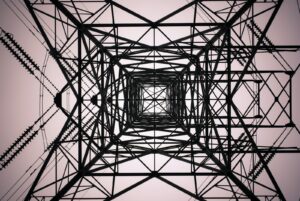Home is where the smart is
First there were smartphones, then there were smart television sets and now everyone is talking about smart homes.
It might sound like something ripped from the pages of a Jules Verne novel, but the prospect of a home that thinks for itself, generates power itself and is also able to sell electricity back to the grid when demand allows is now a reality, although a lot of the technology involved is still in its infancy.
The Buildings Performance Institute Europe (BPIE) has warned ‘current policy discussions’ around smart buildings ‘lack ambition’, particularly around their potential as ‘micro energy-hubs’.
In a new report, which included a new definition of a smart building, the organisation claimed ‘the legislative framework’ in Europe is one of the ‘biggest barriers to the widespread penetration of smart buildings’.
It also defines a smart building as ‘highly energy efficient’ and covers its low energy demand by ‘on-site or district-driven renewable energy sources’.
Smart thinking
Here in the UK, there are plenty of smart energy products on the market place, along with small-scale trials of smart buildings.
‘We are seeing some innovate local authorities, like Oxford City Council, really want to find out what the benefits [of smart buildings] can be,’ says the co-founder and chief technology officer of smart energy developer Moixa Technology, Chris Wright.
Moixa lead a £1.2m smart energy system in Oxford which aims to tackle fuel poverty in Rose Hill, East Oxford, a social housing estate which is in the lower 10% of the UK’s most deprived communities.
The project was named Residential Building Energy Project of the Year in the Energy Awards, 2016. The company has installed 2kWh smart batteries in 82 homes, a primary school and an 8kWh battery stack in a local community centre.
The batteries are linked to 200kWp of solar photovoltaic (PV) panels on the homes and a further 100kWp of solar on the school and community centre, creating a virtual smart local energy grid.
‘We’ve also worked with Camden and in Barnsley, where they want to understand the benefits,’ adds Wright. ‘I think local authorities are testing smart buildings out on a small scale, with 50 or 100 systems, and they are seeing a lot of benefits.
‘We are now seeing some local authorities looking at larger scale opportunities with thousands of systems, as the evidence builds that the energy poverty, energy efficiency and green agenda really do make sense.’
Smart systems that understand you
Looking to the the future, Wright believes people are more likely to buy separate pieces of smart technology kit, rather than an single ‘holistic’ system.
‘The idea we have of a smart building is not one of a homogeneous system provided by a single vendor. Although that is tempting for manufacturers, because it’s by far the easiest the way to make it work, we don’t think it will be realistic. It’s not how things will pan out.’
Wright adds the smart buildings of tomorrow will be integrated with the internet and use intelligent software agents.
‘People don’t necessarily care enough about energy to do something themselves,’ he explains.
‘Smart systems should get your priorities and then operate on that basis. They should operate on your behalf. It’s something we have started to build into the Moixa smart battery, so you can tell it you energy targets.
‘You should be able to tell it “I care most about carbon or most about cost”, and on that basis it will optimise the performance of your system without you getting involved in the process.’
Wright says another issue will be how various pieces of smart technology, which come from different suppliers, interact with each other.
Making the smart house the norm
Moixa is currently working on a smart energy project in the Scilly Islands with Hitachi and PassivSystems.
He adds Hitachi have created a smart city platform for the project. Moixa are responsible managing home energy storage and electric vehicle charge points, while PassivSystems are looking at air source heat pumps.
‘In terms of how do smart homes work for you, it is key that you have different things from different vendors, which will work together to give you benefits.’
Wright adds there will be a point when having a smart house is the norm.
‘Most people will expect to have smart features in their car now,’ he explains.
‘It’s completely normal to have a sat nav. It’s becoming normal for the car to talk to the car vendor and tell it what is wrong with it. These things will become normalised, because the connectivity is so cheap.
‘There is a real issue with the Internet of Things connectivity, because you either end up with 3G or 4G connectivity built into the system, in which case you add a whole bunch of costs and also suffer a terrible reliability. Or you end up on Wifi and you end up with a whole bunch of things, which may go wrong.’
Smart energy and heating systems can also have other more social benefits, such as allowing family members to keep an eye on vulnerable relatives.
Wright uses the example of energy monitoring systems, which will show if a relative is up and about as ‘there’s always a spike between eight and nine in the morning and you would notice if it’s not there’.
‘Technology should work on your behalf,’ he adds. ‘That’s why battery systems are so powerful, because they don’t ask you to change when you watch television or when you do your washing. They just work with the patterns you have and try to optimise your energy around that, by storing it and releasing it to maximise savings, and potentially trading that energy against grid services on your behalf.’
















